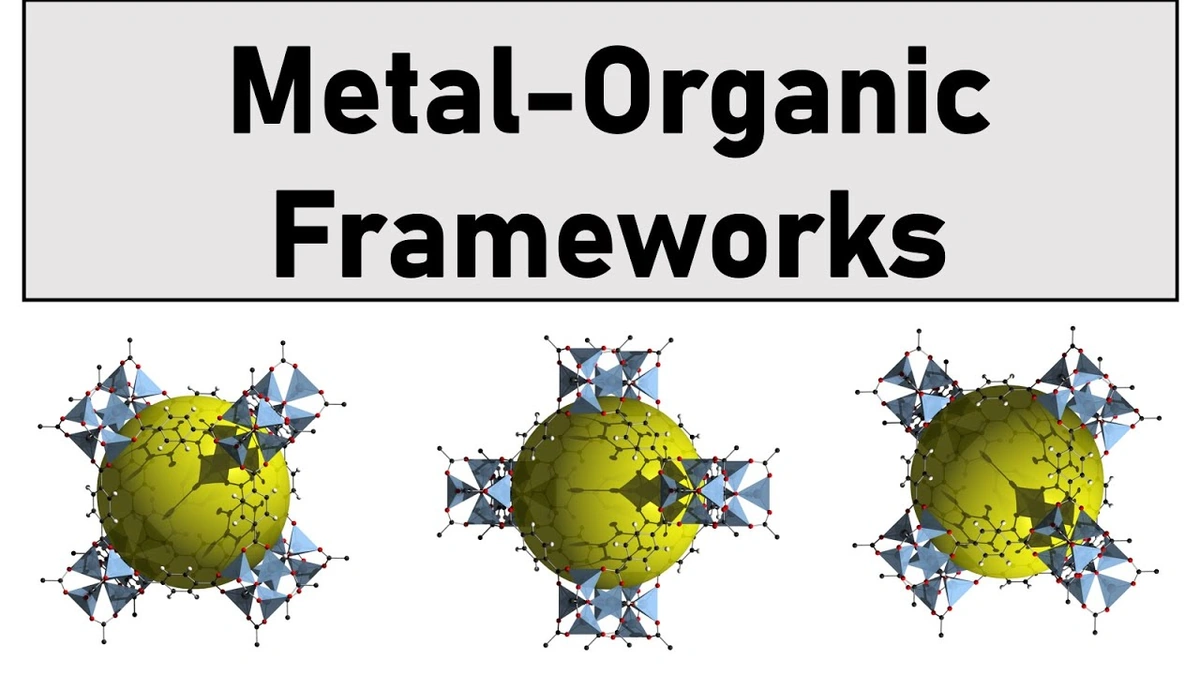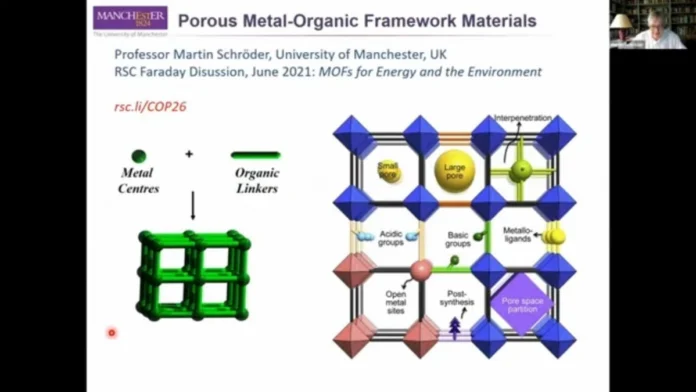Okay, so another Nobel Prize has been awarded. Big deal, right? But here’s the thing: this one, awarded for research into metal-organic frameworks (MOFs), is actually super cool – and has implications that could affect your life in ways you haven’t even imagined. Let’s be honest, most of us glazed over the chemistry lessons in school. But stick with me; this is worth understanding. Forget memorizing the periodic table; we’re talking about a technology that could revolutionize everything from how we store energy to how we clean up the environment. And for those preparing for competitive exams like CSIR NET , understanding the basics of MOFs and their real-world applications is crucial!
The “Why”: Why Should You Care About Metal-Organic Frameworks?

So, what exactly are metal-organic frameworks ? Imagine tiny, incredibly porous sponges built from metal ions and organic molecules. These sponges have an insane surface area – we’re talking the surface area of a football field packed into a single teaspoon! Because of this huge surface area, MOFs are excellent at trapping gases, storing molecules, and catalyzing chemical reactions. The Nobel Prize recognized the groundbreaking work in designing and synthesizing these materials. The research isn’t just some abstract scientific pursuit; it’s about creating solutions to some of the world’s most pressing problems. What fascinates me is the potential to selectively capture carbon dioxide from industrial emissions, helping combat climate change. Or imagine highly efficient hydrogen storage for fuel cell vehicles – a genuinely cleaner future. The possibilities are endless.
The beauty of MOFs lies in their tunability. By carefully selecting the metal ions and organic linkers, scientists can tailor the pore size and functionality of the framework to suit specific applications. So, it’s like having a customized molecular sieve, designed for a particular task. For example, MOFs can be used in gas storage, catalysis, separation, sensing, and drug delivery.
How Do Metal-Organic Frameworks Actually Work? (A Layman’s Guide)
Let’s ditch the jargon and break this down. Think of a MOF as a 3D-printed scaffolding at the nanoscale. You’ve got metal ions (the “metal” part) acting as nodes, connected by organic molecules (the “organic” part) acting as linkers. These linkers create a repeating pattern, forming a highly porous structure. It’s like a complex jungle gym, but for molecules. The pores within this structure are where all the action happens. When a gas molecule, like carbon dioxide, enters the pore, it gets trapped due to interactions with the pore walls. The strength of these interactions can be fine-tuned to selectively capture specific gases. A common mistake I see people make is to think MOFs are just filters. They’re far more sophisticated. They are tunable at the molecular level.
But how do you choose the right MOF for a specific application? This is where materials science and chemistry come into play. Researchers carefully consider factors like pore size, surface area, chemical functionality, and stability. It’s a bit like baking a cake – you need the right ingredients and the right recipe to get the desired result. And the “baking” process itself, the synthesis of MOFs, is a complex art. There are several methods, including solvothermal synthesis, microwave synthesis, and electrochemical deposition. Each method has its own advantages and disadvantages, depending on the desired MOF structure and properties.
The Emotional Angle | From Lab Curiosity to Real-World Impact
That moment of realization, when you understand the potential of something truly transformative – that’s what gets me excited about MOFs. Imagine a world where polluted water is easily filtered using MOF-based membranes. Or where new drugs can be delivered directly to cancer cells, minimizing side effects. This isn’t just science fiction; it’s becoming a reality, thanks to the Nobel Prize-winning research in this field. The potential of MOFs extends to applications such as air purification, water treatment, and energy storage.
Let me rephrase that for clarity… While sources suggest widespread adoption is still some years away, the groundwork is being laid now. As per the guidelines mentioned in several reports, the development of cost-effective and scalable manufacturing processes is crucial for widespread adoption. But, and this is a big but, the progress has been remarkable. From academic curiosity to tangible applications, the journey of MOFs has been nothing short of inspirational.
Beyond Carbon Capture: Other Applications of Metal-Organic Frameworks
Okay, so carbon capture is the poster child for MOF applications, but that’s just the tip of the iceberg. Consider these other possibilities: gas storage , catalysis, separation, sensing, and drug delivery.
And, MOFs aren’t just confined to the lab. Companies are already exploring commercial applications, and a few are already starting the commercialization process. From advanced filtration systems to next-generation batteries, MOFs are poised to disrupt various industries. Speaking of industries, for those preparing for competitive exams like CSIR NET and others, it’s crucial to familiarize yourself with current industrial applications, including hydrogen storage .
Now, what about MOF Synthesis ? Well, MOF synthesis involves a variety of chemical methods, ranging from simple self-assembly processes to complex templating techniques. The choice of method depends on the desired MOF structure and properties.
The one thing you absolutely must double-check is keeping up with the latest applications and research. New advances are being made constantly , and those who want to stay on top of the science, and use it, need to keep in touch with current research.
Oh, and MOFs have potential in selective adsorption too! Selective adsorption of specific gases or molecules is a key application of MOFs, enabling their use in gas separation, air purification, and catalysis.
The Future of Metal-Organic Frameworks: What’s Next?
So, where do we go from here? I initially thought this was straightforward, but then I realized how many different avenues are being explored. The future of MOFs is bright, with ongoing research focused on improving their stability, scalability, and functionality. We’re talking about creating MOFs that can withstand harsh conditions, that can be mass-produced at low cost, and that can perform even more complex tasks.
While sources suggest a specific timeline for widespread adoption, the official confirmation is still pending. It’s best to keep checking the official academic publications. The latest research explores areas such as bio-MOFs for biomedical applications and composite MOFs for enhanced catalytic activity.
One possible impact? Solving the global water crisis. New metal-organic frameworks may be the key! The future of water purification is linked to the development of advanced materials like MOFs, which can selectively remove contaminants from water sources. As our understanding increases , so too will the ability of researchers to put them to use.
FAQ About Metal-Organic Frameworks
What exactly are the advantages of using metal-organic frameworks?
The main advantages are their high surface area, tunable pore size, and versatility in various applications. They’re like molecular Swiss Army knives.
How are MOFs different from other porous materials like zeolites?
MOFs offer greater tunability and design flexibility compared to zeolites, allowing for more precise control over their properties. It’s the difference between a custom-built car and an off-the-shelf model.
Are metal-organic frameworks safe to use?
Safety depends on the specific MOF and its application. Rigorous testing is essential to ensure that MOFs are safe for both humans and the environment.
What are the limitations of metal-organic frameworks?
Some MOFs can be unstable in the presence of moisture or harsh chemicals. Scalability and cost-effectiveness are also challenges that need to be addressed.
Are there any commercial products that use metal-organic frameworks?
Yes, some companies are already using MOFs in air purification systems, gas storage tanks, and drug delivery devices.
How do I stay updated on the latest research on MOFs?
Follow scientific journals, attend conferences, and keep an eye on the websites of leading research institutions.




